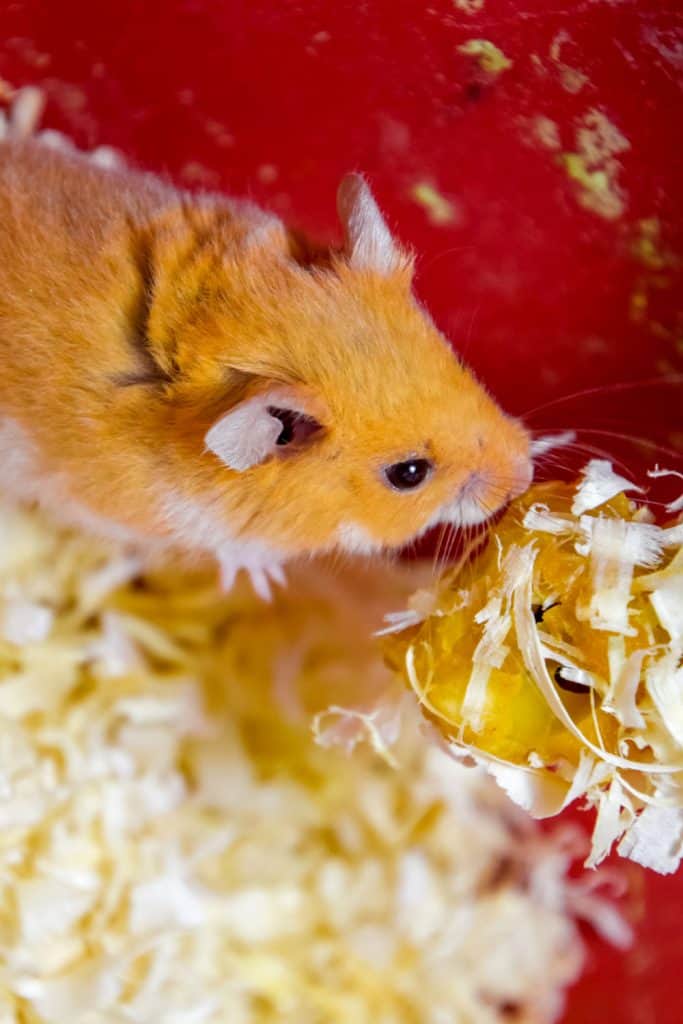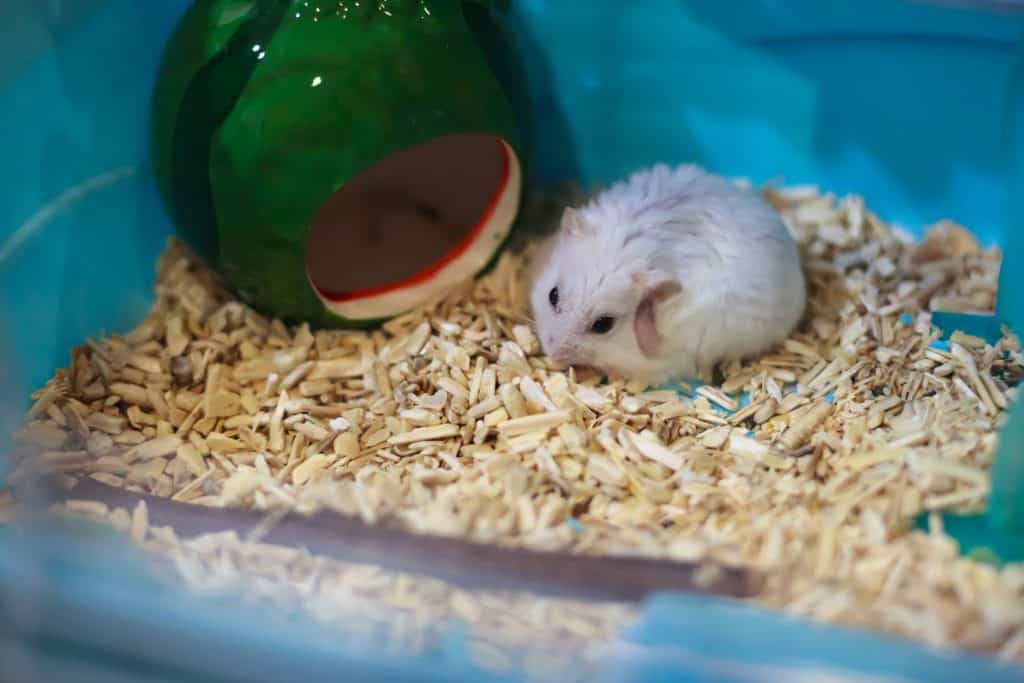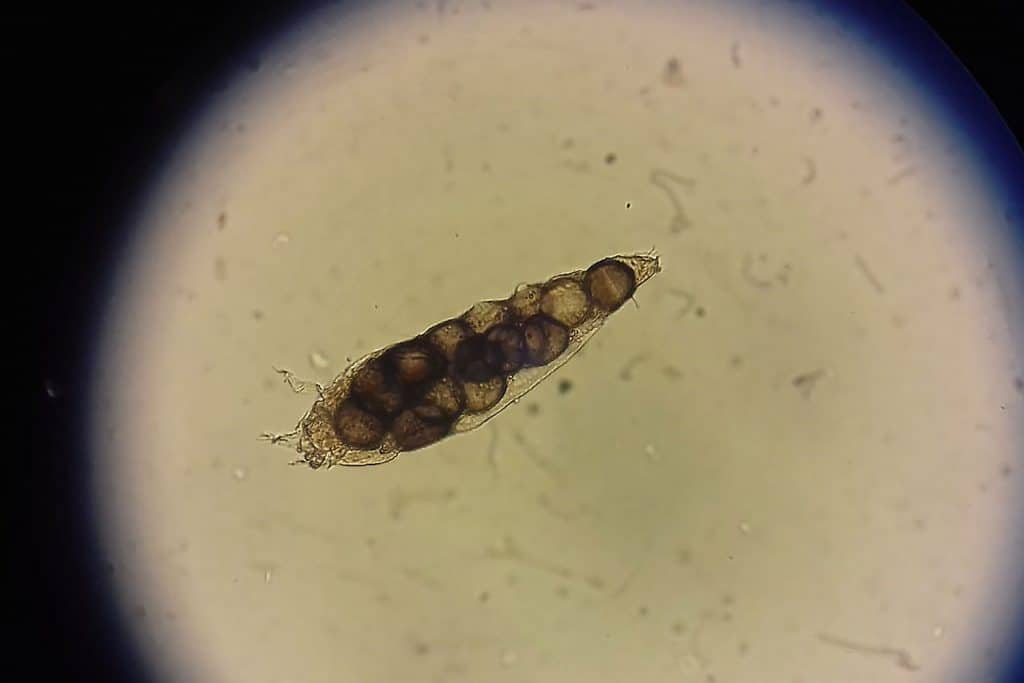There is a list of supplies to get ready when bringing home a hamster. In that list, you'll find bedding, and we're sure you've spent some time finding the right bedding for your hamster. When researching bedding, you may have come across pet parent forums discussing freezing their hamster bedding before using it.
Are you wondering if you should do the same? Well, you're in luck. We have gathered our research to explain why pet parents opt to freeze, the benefits of this process, and will give you some recommended storage methods for your hammie's bedding.
Freezing hamster bedding is a prevention protocol. The process of freezing minimizes the risk of harmful mites or other bug infestations within your hamster bedding.
If your bedding has not been stored properly or wants to cover all your bases, you should freeze your hamster's bedding. Just make sure you completely defrost it before putting it in your critter's home.
Now we know that freezing bedding aids in mite prevention, but what mites should you be worried about? Read on as we touch on specifics and break down signs and symptoms of a hamster with mites.

Benefits Of Freezing Hamster Bedding
Keeping your hamster's home clean and free of pests is vital for their health and happiness. Freezing bedding is a useful precaution to take if you are worried that your bedding has been compromised or you want to go the extra mile in protecting your furry friend. Freezing temperatures for the right amount of time will kill both adult mites and their eggs.

The process of freezing can reduce the chances of an infestation of Demodex mites or Sarcoptic Mange mites. Both types of mites create a lot of discomfort for your pet and may result in severe skin infections. Prevention is key and easier than treatment when it comes to mites and other parasites that may affect your hamster.
Read more on our blog post, “What's The Best Bedding For Your Hamster's Cage?”
How Long Should You Freeze Hamster Bedding?
When freezing hamster bedding, it is important to allow enough time for the cold temperatures to kill off any mites and their eggs. It is recommended to freeze bedding for 48 hours in a sealed ziplock bag. After freezing, allow for the bedding to defrost entirely before laying it in your hamster's cage.
Ensuring the bedding is dry is just as important as defrosting. Giving your hamster wet or cold bedding can lead to discomfort and health issues down the line.
What Are Proper Storage Methods For Hamster Bedding?
Compromised bedding is a downfall for your hamster and creates an extra expense for you. No one wants to buy a large bag of bedding to get one use out of it. It is not only pests that we worry about getting into the bedding. Substrate that gets wet and moldy also poses risks to your hamster. So, how do you properly store your bedding to reduce the chances of these unfortunate events?

You want to keep your bedding dry, clean, and fresh. In some cases, you may have a large enough freezer to store all of your bedding and remove what you need as you go. If you don't have the freezer space, storing extra bedding in a sealed container in a temperature-controlled area is your best option. Air-tight and water-proof options are the proper storage containers.
You can find an air-tight storage container here on Amazon.
Read more on our blog post, “How Much Bedding Does A Hamster Need?”
How Do You Get Rid Of Mites On Hamster Bedding?
If you are concerned that your hamster is suffering from a mite infestation, the first step is to get them to their Veterinarian. After an exam and some initial testing, you will be able to determine what kind of mite is present. Knowing what type of mite you are dealing with will help you get the most effective treatment.

You may come across medicated mite sprays at your local pet store. Always double-check with the pet store employees or another professional to ensure the spray is not toxic to your hamster. Once reassured, using these types of sprays on your hamster's bedding can be an alternative to riding mites by freezing.
Learn more on our blog post, “5 Effective Hamster Bedding Alternatives.”
How Often Should You Change Hamster Bedding?
How often you need to change your hamster bedding really depends on your hamster. Part of daily hamster care is checking their cage for soiled bedding, shavings, or old food and treats to remove. Removing soiled bedding frequently helps keep your hamster comfortable and happy in its environment. Dirty environments can stress these tiny pets and motivate them to avoid specific areas in their enclosures.

On top of a daily sweep, the Animal Humane Society recommends doing a complete change of bedding once a week. When changing the bedding, wash the floor and sides of the cage with warm, non-toxic soapy water. Try to keep a small amount of the previous bedding, if it is clean. This allows familiar scents to linger in the freshly cleaned cage.
While hamsters prefer a clean environment, they do enjoy having their scent around. Deep cleaning too often or not enough both run the risk of causing your hammie some stress.
Read more on our blog post, “8 Awesome Hamster Cage Cleaning Tips.”
How Do You Know If Your Hamster Has Mites?
Determining if your hamster has mites or figuring out what kind of mite they are suffering from usually takes a trip to the Veterinarian. There are some giveaway symptoms or signs that indicate this is what is going on with your hammie. Let's talk about what to look out for.

It is not uncommon for a few mites to live on your hammie with no issue. It is when your pet gets stressed, or their immune system weakens that an infestation can occur. This overtaking number is what ultimately causes harm. Symptoms that indicate your hamster is suffering from a mite infestation include:
- Red, inflamed skin around the face, ears, tail, and feet
- Rubbing against the cage walls
- Dry, rough, or scaly skin
- Hair loss on the back or near the tail

Alongside these symptoms, you may find other general signs of declining health, such as a lack of appetite or a decrease in energy. If you come across the mentioned signs, it is time to take some action. Due to a hamster's size, a small amount of time being sick can have a large impact.
The sooner you get control over a mite infestation, the better. The best way to prevent mite infestations is keeping a clean environment, reducing stress for your hamster, and offering them a healthy, balanced diet.
Learn more on our blog post, “Why Is My Hamster Going Bald?”
Do Hamster Mites Go Away On Their Own?
Mites on your hamster can go away on their own if they haven't become an infestation and your hamster and their environment are in perfect health. If you are dealing with an infestation of mites, you will need to intervene. Bring your hamster in for a health check and have your Veterinarian perform a skin scraping to determine if it is mites your hamster is suffering from.
Once you have a diagnosis, you can work with your veterinarian to establish a treatment plan. Mites get treated typically by using medicated sprays, dust, or other topical applications. The veterinarian may also recommend special shampoos or other medications, depending on how severe the infestation is. At this point, you'll need a change of bedding and a clean environment for your hamster to return to.
Read more on our blog post, “Do Hamster's Need Vet Care?”
Can Hamster Mites Live On Humans?
A mite that is zoonotic can pass from animal to human. Luckily, hamster mites tend to be specific to hamsters and other rodents and cannot live on humans. With some involved infestations, you might get bitten by a mite as they jump on and off you.
Try to wear gloves and long sleeves when cleaning out your hamster's cage or applying medications to an affected pet to prevent this from happening.
In Summary
Freezing hamster bedding aids in the prevention of mite infestations. You should freeze bedding if you are worried about compromised bedding or your hamster had suffered an infestation recently. Mite infestations happen in cases where the environment is dirty, or your hamster's health is compromised.
Keeping up with routine cleaning, healthy diets, and reducing stress in the environment are all part of mite prevention. We hope you found this article helpful when addressing mites and your hamster with some insights on why you should freeze hamster bedding.
Looking for more ways to keep up with your hamster's home? Have a look at our blog post, “How To Set Up A Hamster Cage [10 Must-Have Items].”




